Located on the northern shore of the Qiantang River, not far from where the river empties into the East China Sea, is the city of Hangzhou, China. Not only is Hangzhou one of China’s most prosperous cities, it’s also one of its most visited. Between its beautiful sites, enticing culture, top-notch food, great shopping, and history, the things to see and eat in Hangzhou are endless.
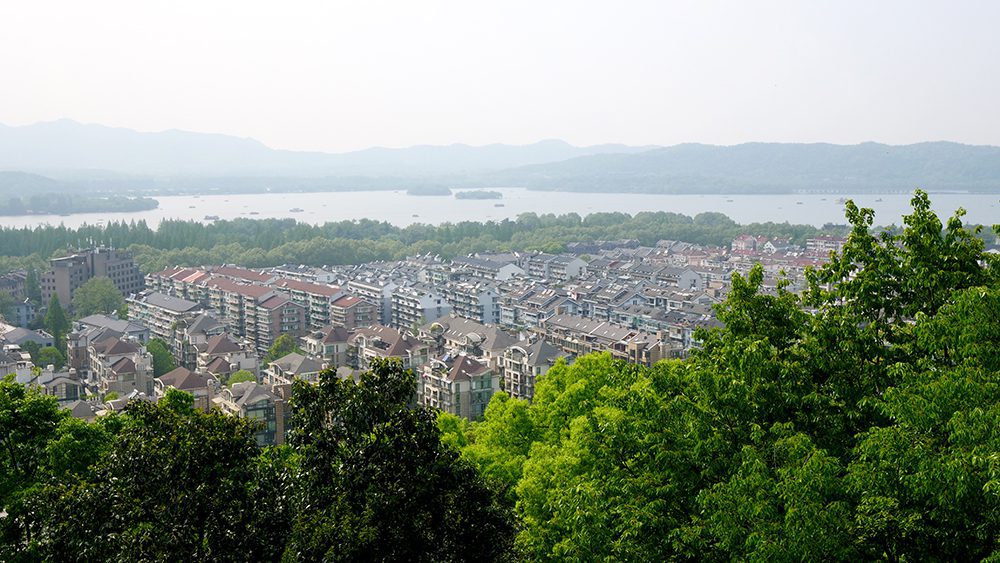
Hangzhou’s history dates back at least 2,200 years, although the area is thought to have been inhabited for seven thousand years. The city is known as one of the Seven Ancient Capitals of China and served as the capital of the Southern Song dynasty from 1132 until 1276.
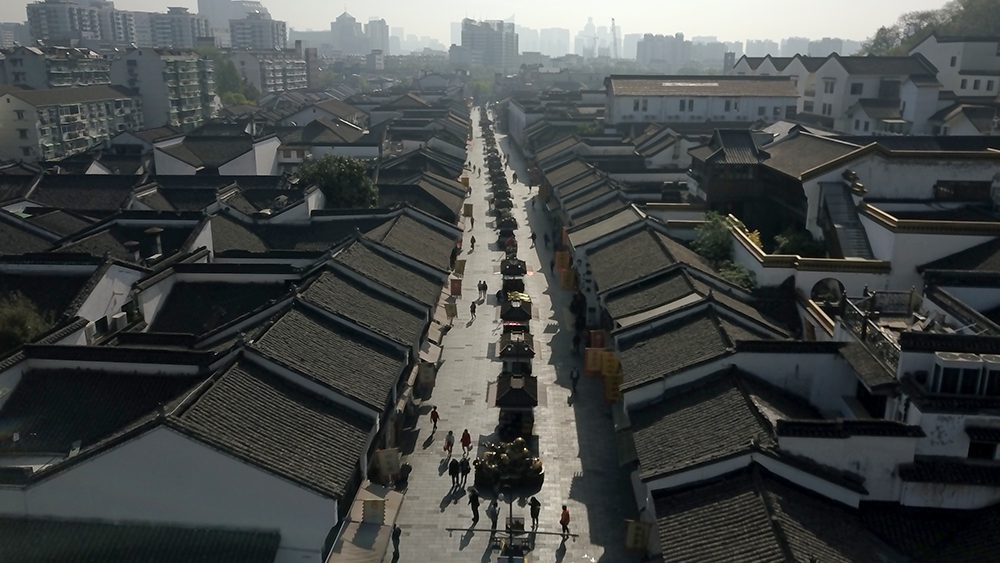
The famed Italian merchant Marco Polo visited Hangzhou in the 13th century and called it “the finest and most splendid city in the world.” Its reputation as a fantastic travel destination hasn’t changed much since. These are the top 10 things to see and eat in Hangzhou, China.

Perhaps one of the most eye-catching structures in Hangzhou is Chenghuang Pavilion (also known as City God Pavilion), which stands atop Wushan Hill. Visiting Wushan Hill is easily one of the best things to see and eat in Hangzhou, as the trail to the top will take you past ancient temples, memorials, and pavilions dating back over 1,000 years.

Among these are the beautiful Song Dynasty-era Dongyue Temple and the Medicine God Pavilion. Visitors to the Medicine God Pavilion pray to Shanong, the god of medicine, if they are sick. It’s also a great spot to pay respects to the pioneers of traditional Chinese medicine.

At the very top of Wushan Hill is the serene City God Pavilion. This relaxing location is tied more to Chinese folk religion than Taoism or Buddhism. Around the pavilion are tables that offer gorgeous views of Hangzhou and West Lake. During my time there, my friend Jamie and I enjoyed some Dragon Well green tea and a few snacks we had picked up elsewhere. Not for the first time in Hangzhou, the lake and surrounding greenery strongly reminded me of the time I had spent in Bosnia and Slovenia!
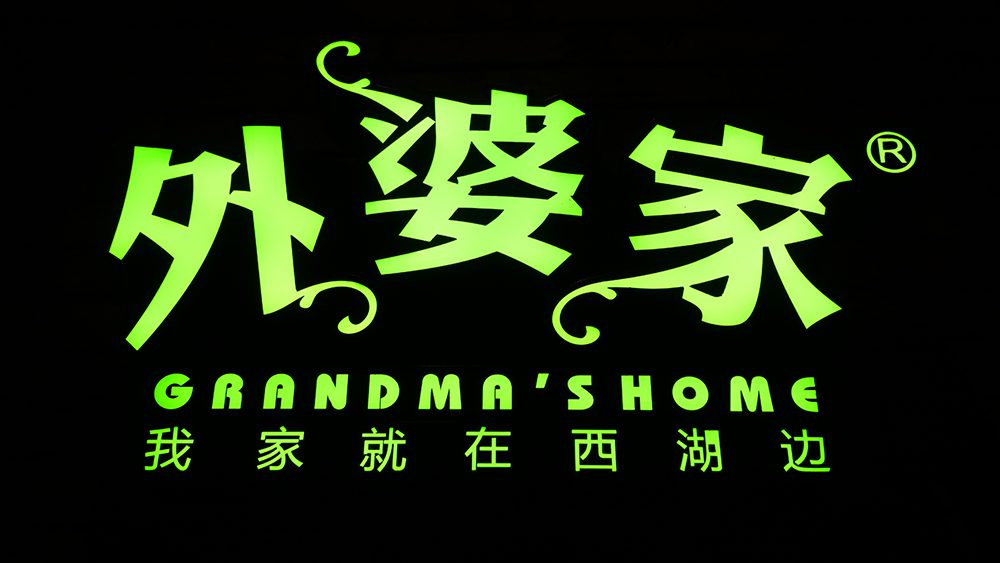
One of the best restaurants to get a taste of delicious and exotic Hangzhou cuisine is Grandma’s Home (formerly known as Grandma’s Kitchen) in the Xihu Tiandi area. From what I heard, it’s a very popular restaurant and it was certainly packed the night I visited.

The first dish I tried, a fish from West Lake, was crispy and very aromatic. Texture-wise, it almost reminded me of tender pork ribs. The fish contained lots of tiny bones, but I’m very happy to say that they were so small, I could eat right through them with no problem. It was tasty and juicy and perfect with the cold and refreshing Snow Beer I had ordered.
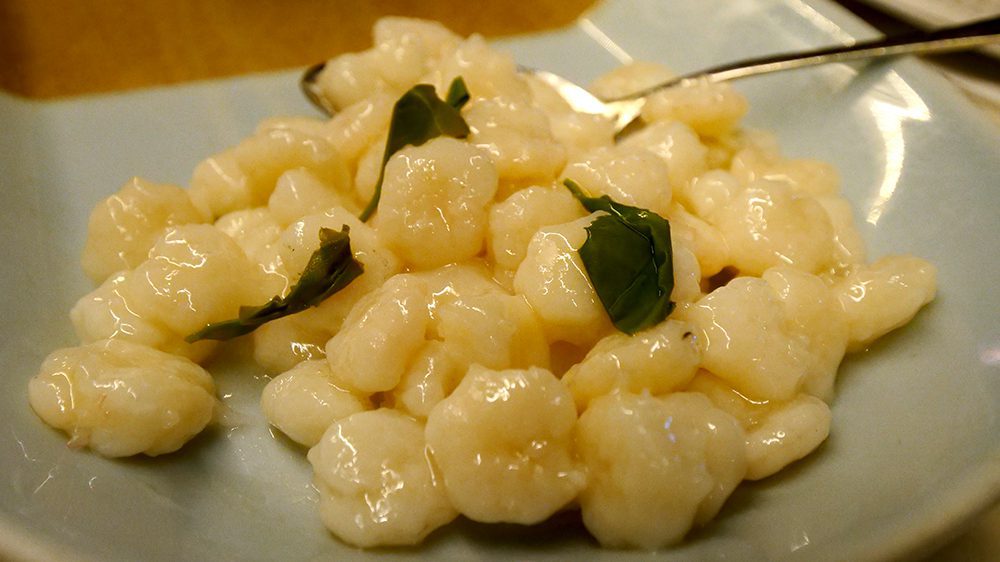
I also tried some fried shell shrimp with dragon well tea, which were coated in a delicious but slippery white sauce that made them tough to pick up with chopsticks. Once I finally held on to one, I fell in love with how fresh they were. Try them with some vinegar sauce for an added layer of flavor!

A very kind woman from Malaysia let me try her mouthwatering sweet and sour pork, which came with a nice, vinegary sauce. She also shared some tasty bamboo shoots with peppers, green onions, and succulent crab meat.
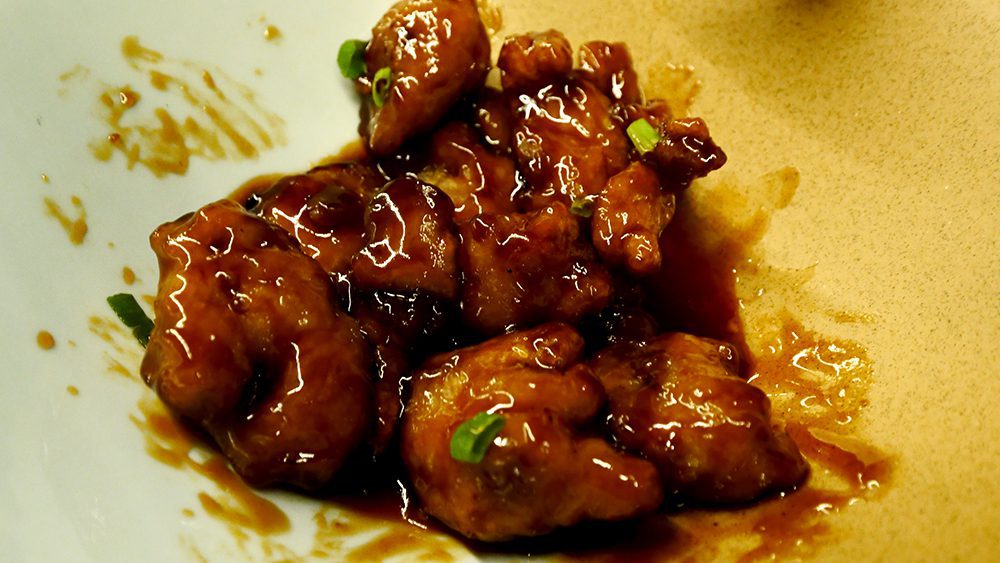
The most exotic item on the restaurant’s menu is bullfrog soup with Shishido peppers, so of course I had to give it a whirl! Being from Florida, I’ve eaten frog before, but the flavors in this soup blew me away. The meat was kind of like chicken, and the creamy broth had a kick of spice to it.
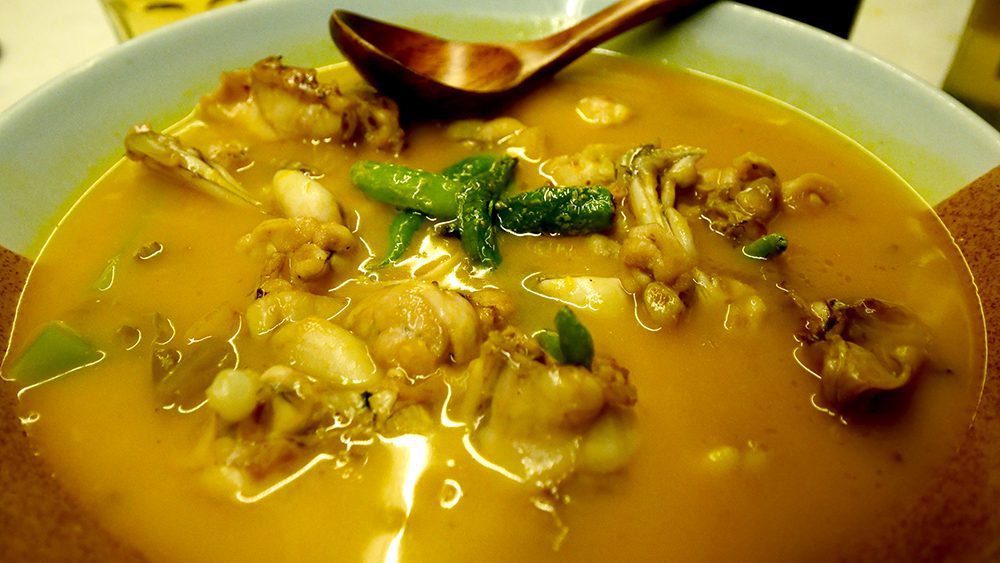
But the dish was so bony, I had to really hunt for the meat, which made eating it feel like work. Even though it wasn’t my favorite, trying this soup is one of the top things to see and eat in Hangzhou. After all, how often can you say you’ve had bullfrog soup?
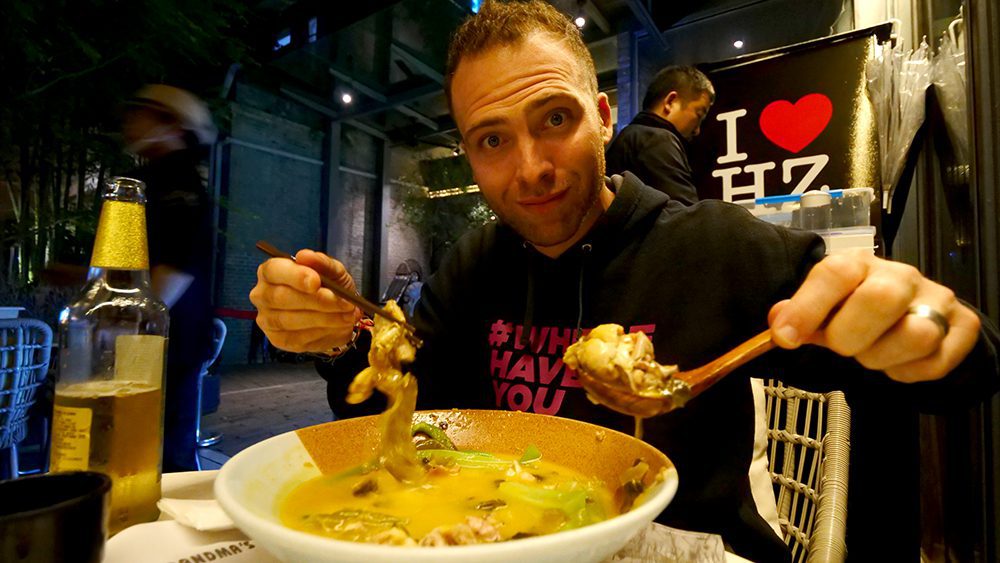
My meal at Grandma’s Home came to 166 Yuan, or a little over $24 U.S.

While Hangzhou boasts many incredible sites and attractions, the one that gets the most attention—and rightfully so—is West Lake. Photos and video of this large, picturesque freshwater lake can only do so much. It’s even more breathtaking in person and is just begging to be explored.
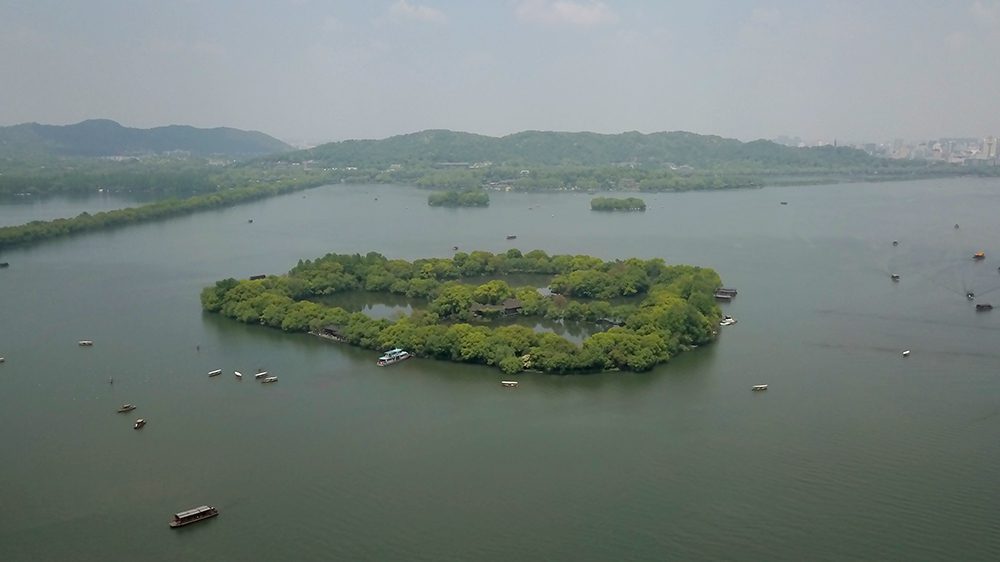
West Lake is divided by three causeways and is home to a wide variety of attractions, including temples, gardens, pagodas, and even artificial islands. Between its beauty and influence it’s had on garden design and artists, it’s no wonder West Lake was named a UNESCO World Heritage Site in 2011.

To truly see how gorgeous and expansive this scenic wonder is, I recommend taking a boat ride to Fairy Islet, one of the lake’s islands. A round trip on the wooden ferry, which is a replica of the emperor’s cruise boat, only costs 35 Yuan, or roughly $5 U.S. This boat ride is one of the best things to see and eat in Hangzhou.
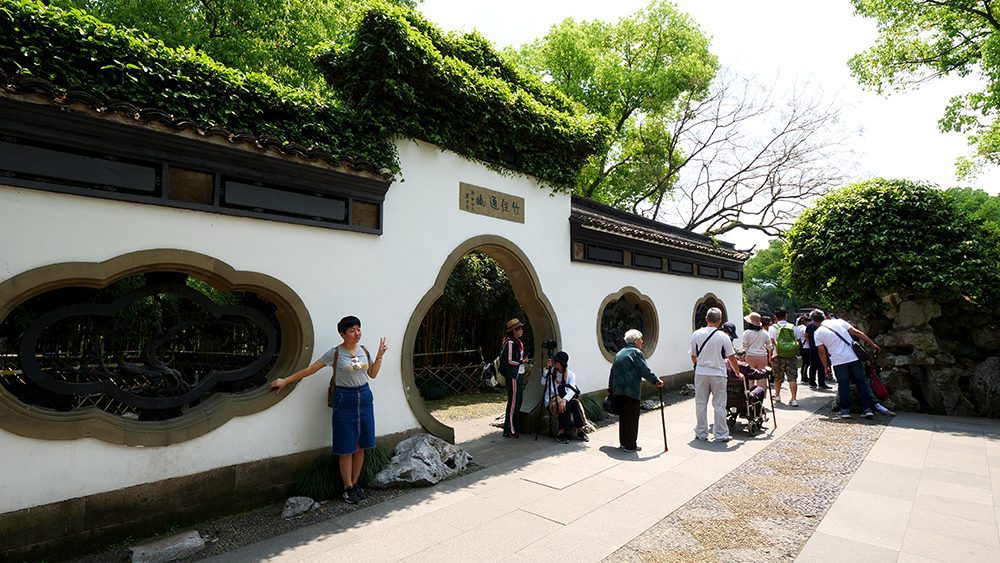
Fairy Islet got its name because it was once thought that fairies and immortals lived there. It’s one of many stories about the lake that involve mythical creatures! The island contains another lake inside it, and a winding path that will take you an awe-inspiring lookout point where you can marvel at the lake, mountains, and nearby pagodas.
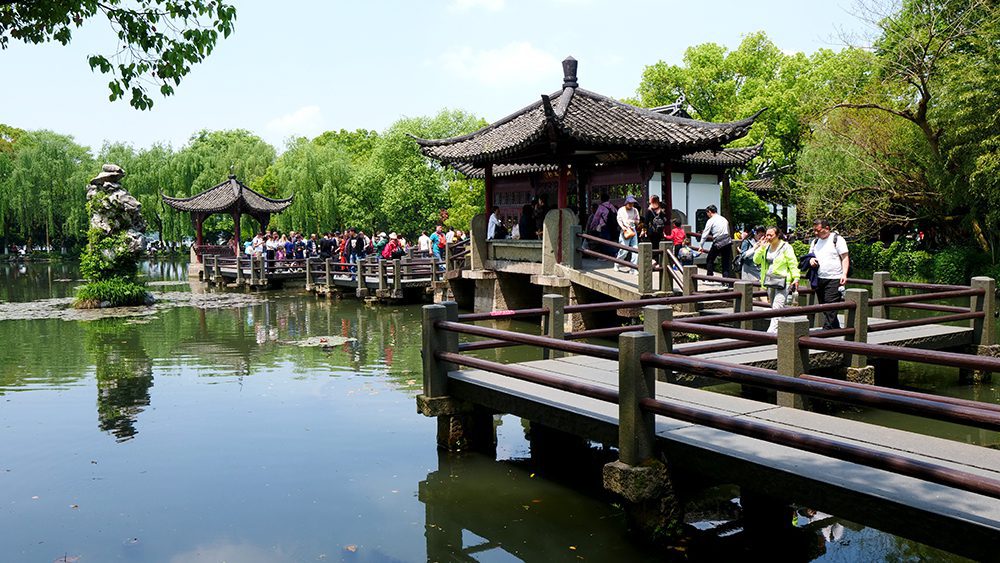
There are also beautiful gardens, bridges connecting smaller islands, and a rock that supplies you with good luck if you can throw a coin into a small opening.
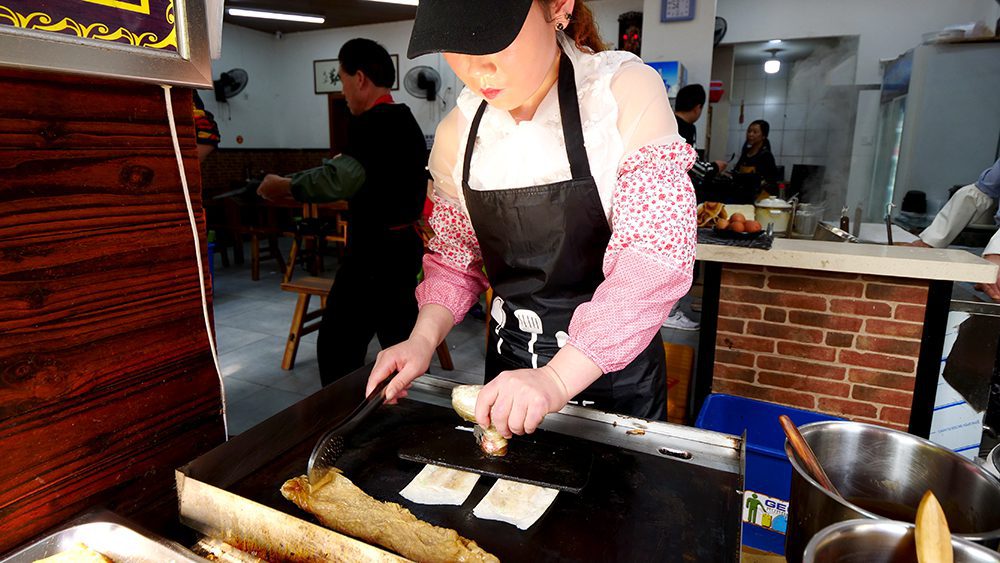
Just inside the original city gate is a restaurant whose food made my taste buds sing on the morning of my second day in Hangzhou. I’m all about trying traditional, local foods when I travel, and this spot did not disappoint one bit!

First up, I tried a traditional pancake with roots that go back at least 800 years. It contained tofu skin, green onions, and a sweet sauce that also had a nice amount of heat! The crispy exterior was divine and the green onions inside gave it a refreshing element. This pancake is one of the most mouthwatering things to see and eat in Hangzhou!

My second dish was a baked xiaolongbao. Xiaolongbao is usually steamed, but the baked variety was just as fantastic as the traditional version. The baking process gave it a soft top and a crunchy bottom. And as always, the fatty pork soup inside was otherworldly. Just remember to never eat one whole because they’ll burn your mouth!
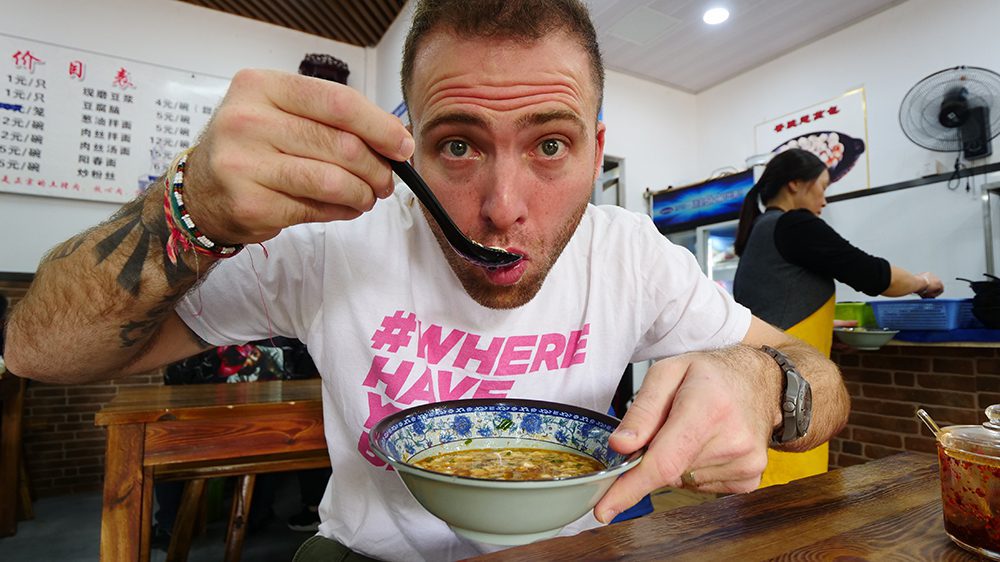
Last, but certainly not least, was a bowl of tofu soup with spring onions. It was a really nice, light soup that contained lots of buttery tofu that slipped easily down my throat. I added some chili flakes to mine since I’m a big fan of spice. It gave it a nice punch of heat and flavor!

You can’t visit Hangzhou without exploring the exquisite Lingyin Temple. This Buddhist temple’s name translates to Temple of the Soul’s Retreat. It was founded in 328 AD by an Indian monk who what known as Huili in Chinese. Despite being attacked and rebuilt sixteen times in its history, it is still one of the largest, wealthiest, and most important Buddhist temples in China.

Today, Lingyin Temple is a popular destination for tourists, who come to marvel at the 470 gorgeous Buddhas that have been carved into the rocks and caves on the grounds. The carvings date back to 951 AD. Among them is the famed Maitreya Buddha, or “Laughing Buddha.” It’s the largest Laughing Buddha in China and is one of the top things to see and eat in Hangzhou!
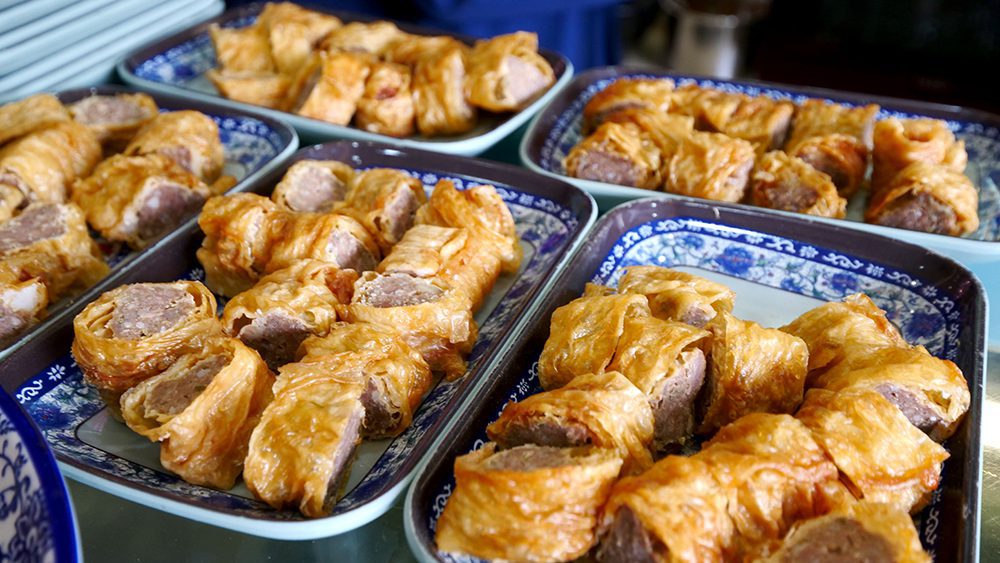
Of all the amazing gastronomical experiences I had in Hangzhou, one of my favorites was the food tour I went on with my friend Jamie from UnTour Food Tours. She gave me a special, early look at a food tour that will soon be available in Hangzhou. We tried many scrumptious, traditional Chinese dishes on the 3-hour tour, but my favorite by far were the beef rolls wrapped in tofu skin.

How do I even begin to describe these little morsels of heaven? They’re pieces of minced beef with a few layers of thin, crispy tofu skin wrapped around them. The juiciness of the beef mixed with the crispiness of the fried tofu skin was unlike anything I’d eaten in China.

I could taste spices like star anise, cinnamon, and clove in the beef. The rolls taste incredible with the sauce, which is spicy but not so hot that it takes away from the flavor. It’s one of the most mouthwatering things to see and eat in Hangzhou! You have to try this dish!

During my sneak peek Hangzhou food tour with Jamie from UnTour Food Tours, we explored a neighborhood wet market between restaurant visits. A wet market is one that sells fresh, perishable goods like meat, poultry, fish, and produce. These markets are often considered the heartbeat of the community and are a great place to get a taste of local life. Visiting wet markets is one of my favorite things to see and do in Hangzhou or any other city in Asia!

This wet market was open-air and offered a wide selection of live food animals. I could see river fish, shrimp, freshwater eel, razor clams, and crabs in large containers filled with water. There was also a section for non-living animals, as well as vendors selling bamboo and other fruits and vegetables. I also saw lots of dried meats, including the entire face of a pig!

To get a feel for what old Hangzhou was like, check out the street food options along Hefang Street. The street has been around for roughly 800 years and became a pedestrian-only street in 2000.

During my visit, I had to search to find the street food, but once I found it, I wasn’t disappointed. A woman in a local shop let me try many varieties of baijiu, which is an alcoholic drink that has an alcohol content above 20%, as opposed to a drink like beer, which usually averages around 5%. I loved the peach and rose flavors!

I also had six assorted skewers that contained moist, black mushrooms; tasty fish balls; chicken with wild mushrooms; juicy pork; and chewy wontons. The skewers only cost me 9 Yuan, or only $1.31 U.S. I then wandered into another shop, where I tried some incredible Szechwan beef and pork jerky samples, which were very spicy but ridiculously flavorful.
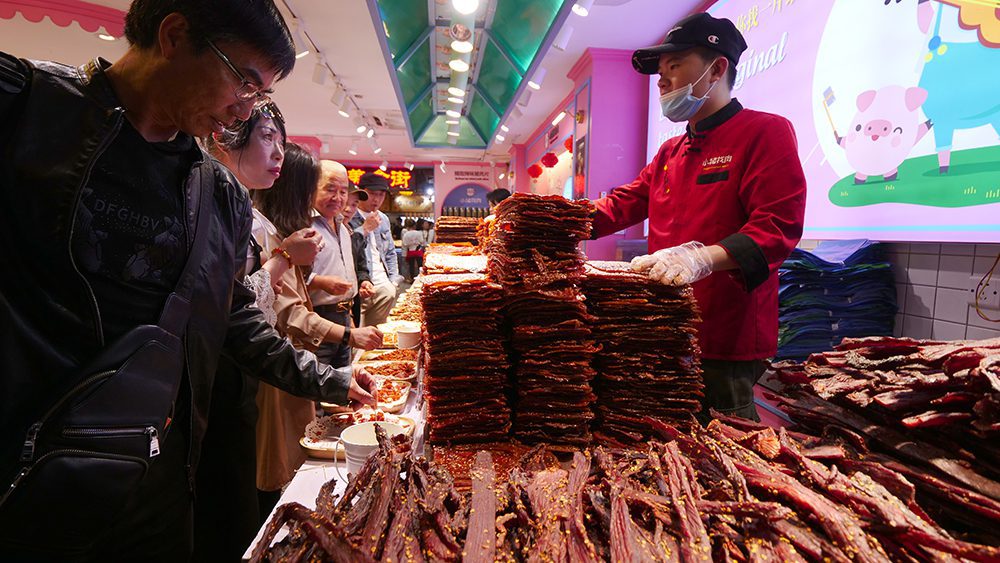
One of the more interesting foods I tried was a wonderful durian cake with a cheesy texture. I followed it with a couple of different mochis. I ended my night with a spicy tofu steak with radishes, chives, and extra chilies, which blew me away. It was a steal at just 10 Yuan, or about $1.45 U.S. Another highlight was a chewy and tender beef skewer, which only set me back 5 Yuan, or roughly $0.73 U.S.

Tourists looking for Hangzhou-specific souvenirs will likely be disappointed after visiting Wushan Lu Night Market. You might find a couple of Buddha statues here and there. However, this market is better known for its knockoffs, which I learned during my visit.
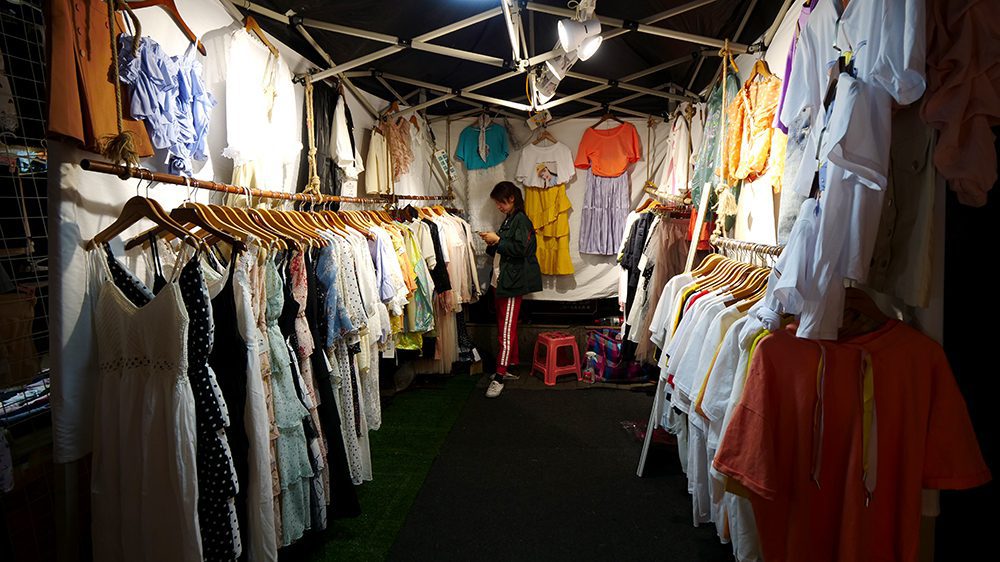
There were a few nice items like clothing, hats, and phone cases. However, most of the goods I saw were knockoffs of popular watch, belt, and handbag brands. I’m personally not a fan of knockoff products. Even though some of them looked cool, I could tell they were fakes by the prices.
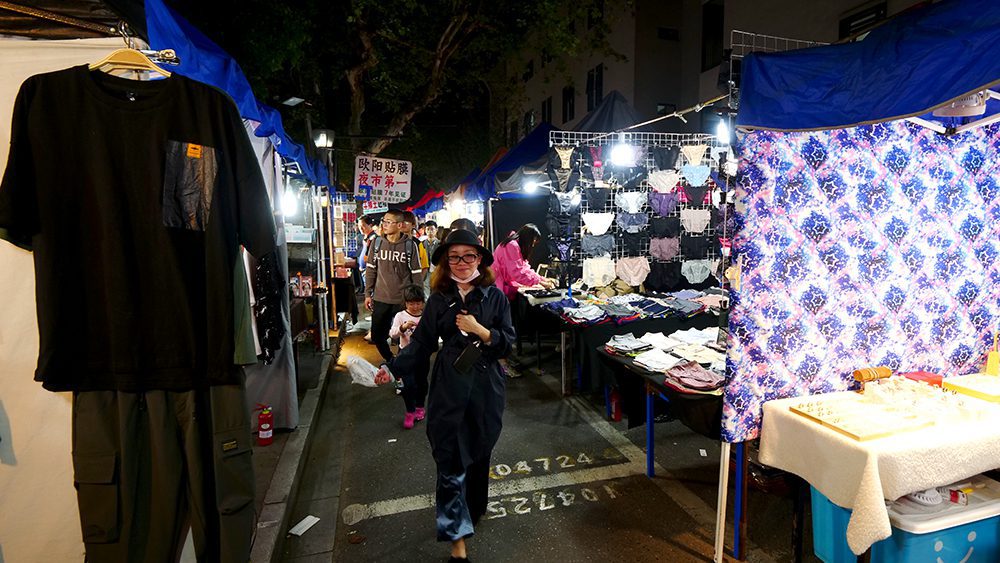
Wushan Lu Night Market is best enjoyed for the experience rather than for what can be bought there. It reminded me of the Sunday night market in Chiang Rai, Thailand. It’s a peek into local life and is one of the top things to see and eat in Hangzhou!
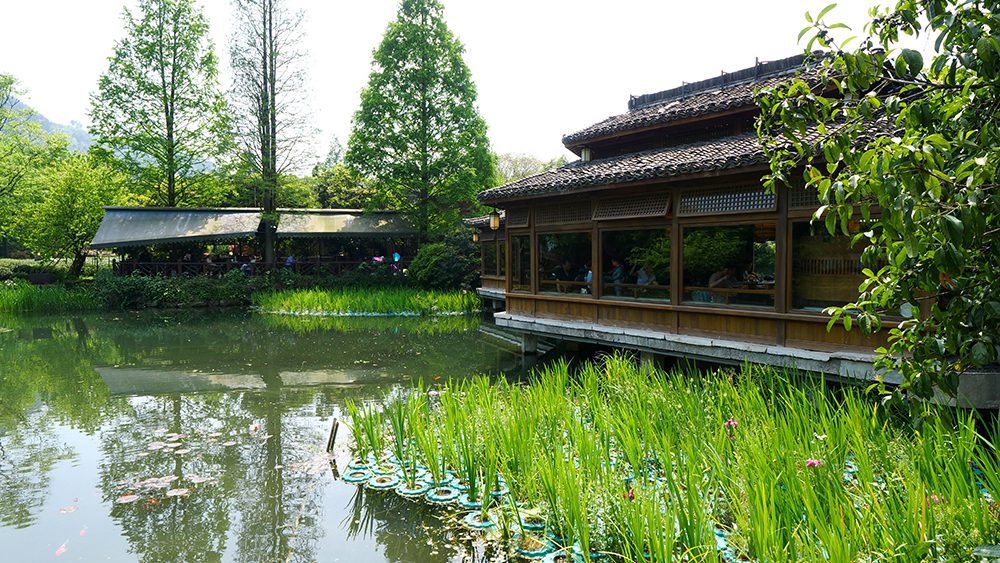
China is the green tea capital of the world, so when you get the opportunity to have a meal at the Green Tea Restaurant, you do it! As I expected, the green tea served there was exceptional. It was some of the best tea I’ve ever had in my life and felt very light and healthy.

I followed the tea with some tender, juicy, and fatty pork cooked with sake. The caramelization on top gave it a nice crispness, but it was still buttery on the inside. There was also a sweet and sour fish soup with ginger that had a flavorful kick to it. It also contained mushrooms, which added an earthiness, and some crunchy, tasty bamboo.
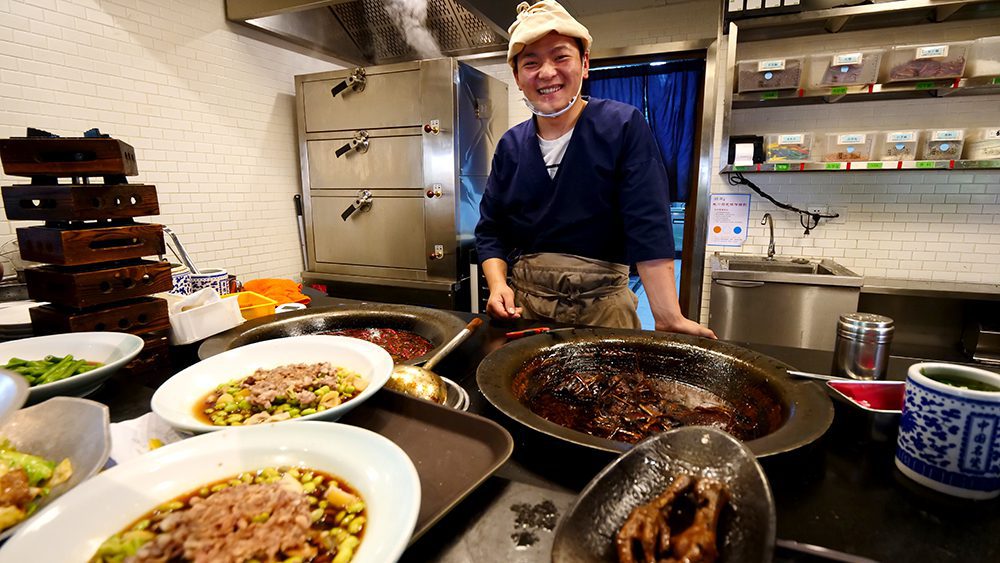
There was a spicy, refreshing cabbage I enjoyed very much. The fresh shrimp with a viscous, almost slimy, honey sauce was also very nice but a little plain. But the main event was the phenomenal pork belly, which had five layers of pork! The flavors, fat, and sauce together were unreal. It was even better when I chased it with more of the restaurant’s green tea!
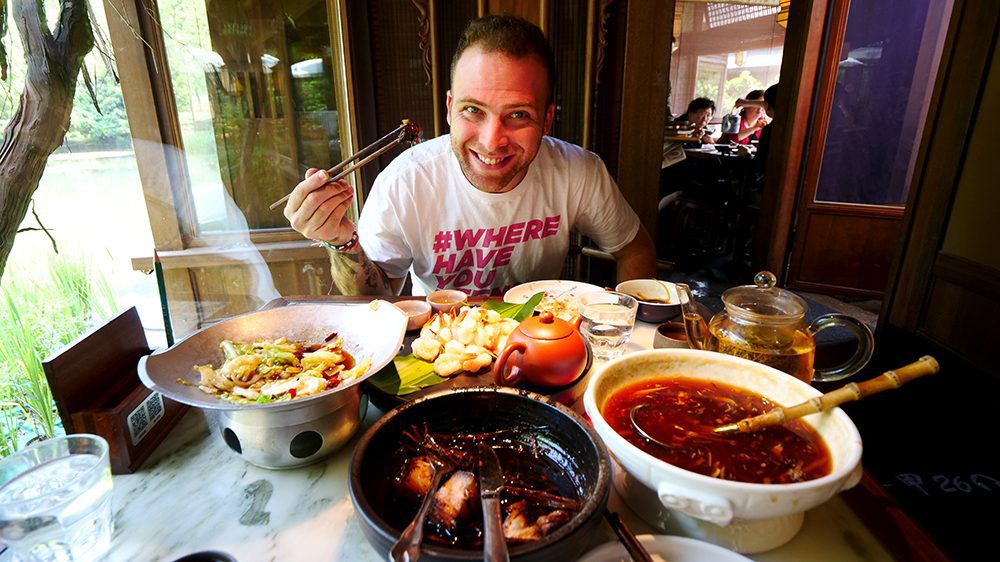
Charlie and I shared a unique sliced-bread-and-ice-cream creation called Bread Temptation for dessert. I’m usually not much of a sweets guy, but even I could get into this decadent dessert. It was fantastic! All in all, this meal is a must, and one of the top things to see and eat in Hangzhou!

When you head to Hangzhou, the best way to get there is to take the bullet train from Shanghai. The ride between the cities takes roughly 45 minutes. I recommend buying your train online in advance to avoid the headache of a sold-out train. Spring for Business Class for extra comfort. A business class ride to Hangzhou from Shanghai’s Hongqiao Station only costs 210 Yuan, or roughly $30.56 U.S.

Hangzhou may be another ancient city that is steeped in millennia of tradition, but it’s anything but boring or stale. It’s a vibrant, bustling metropolis that offers fascinating sites, fantastic eats, and peaceful nature. History and food lovers will be in heaven here. If you love both like me, book a trip to Hangzhou now to check it out for yourself!
NOTE: Before you travel, I suggest buying travel insurance to protect yourself in case any emergency situations come up. In my opinion, AXA Travel Insurance is the very best because it covers a wide array of issues. Buy your AXA Travel Insurance protection plan here!
If you need to check the visa requirements of a particular country, click here. To apply for a visa, find up-to-date visa information for different countries, and calculate the cost of a particular visa, click here!
Counter
101 Countries • 1432 Cities
5 Things You Must Do in Hangzhou, China - Divert Living says:
[…] Marco Polo arrived in Hangzhou during in the 13th century, he was blown away by what he called “the finest and most splendid […]